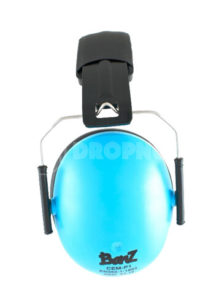What is Hearing Loss
Hearing loss can be categorized into the various degrees:
- Mild hearing loss – Difficulty in hearing and understanding soft speech or speech in a background of noise.
- Moderate hearing loss – Difficulty in hearing normal speech even at close distances.
- Severe hearing loss – May only be able to hear very loud speech of loud sounds such as ambulance siren.
- Profound hearing loss – Unable to hear even loud sound. Tend to preceive loud sounds as vibrations.
Impact of Hearing Loss On Children
Hearing loss has potentially devastating consequences for physical and mental health. Infants or children with hearing loss are likely to experience delayed in development of receptive and expressive language, speech development, communication and even cognitive skills. This in turn is linked to isolation, low self-esteem, learning difficulties and behavioural problems. Essentially, reduced academic achievement resulting from the hearing loss wil limit the child’s career path.
Causes of Hearing Loss
Hearing loss in a child can be due to various causes. Hearing loss in children can be categorized into congenital hearing loss (hearing loss at birth) and acquired hearing loss (hearing loss after birth).
Congential hearing loss can be a result of gentic factors or be caused by other factors such as an infection during pregnancy, prematurity, and other health conditions.
Acquired hearing loss can happened at any age and be caused by frequent ear infections such as meningitis or the measles, head injury or exposure to very loud environmental noises such as in concerts, sporting events, exhibitions with huge crowds (e.g. baby fair expo, computer show expo, etc) or loud noises from constructions works. Some comon infant toys, including rattles, musical toys, toy phones and toy guns are dangerously noisy. The toys when held close up can produce noise limits worse than the noise from the take-off of a plane.
Here’s how toys (when held close to the ear) and common household items rate.
- Vacuum cleaner, hair dryer: 70 Decibels
- Dishwasher: 75 Decibels
- Washing machine: 78 Decibels
- Lawn mower, blender: 85-90 Decibels
- LeapFrog Learning Lily: 90 Decibels
- Little People Dump Truck: 92 Decibels
- High School Musical Hip Pop Dance Jammer: 96 Decibels
- Bob the Builder Deluxe Talking Tool Belt: 96 Decibels
- Tonka Lights and Sounds Hummer: 97 Decibels
- Tickle Me Elmo: 100 Decibels
- Hannah Montana Holiday Pop Star: 105 Decibels
- Transformers Optimus Prime Voice Changer: 110 Decibels
Acquired hearing loss, however, can be cured or prevented when the necessary steps are taken.
How to Prevent Acquired Children Hearing Loss
1.According to World Health Organisation (WHO), more than 60% of all cases of children hearing loss are avoidable through primary prevention.
 Overview of the Causes of Preventable Hearing Loss (WHO)
Overview of the Causes of Preventable Hearing Loss (WHO)
Hearing loss in children can be prevented through:
- Providing newborn and infant hearing screening to identify and treat chiildren with congenital or early-onset hearing loss.
- Regulating use of ototoxi medicines to minimize dangers posed by their indiscrimate use. And regular audiological monitoring to be provided to help identify hearing loss at an early stage where the use of such medicines is unavoidable.
- Regulate and monitor noise pollution levels in the community, especially at recreational venues and sports areanas where children or infants will frequent.
- Raising awareness on healthy ear care practices to reduce ear infections.
- Raising awareness on dangers of loud sounds by educating children at an early age on the risks associated with high volumes.
- Provide hearing protection (such as ear muffs) for the child when the environmental noise is noisy or there is a likelihood in exposing the child to loud recreational environment.
How To Protect Your Child’s Hearing
The use of ear plugs or earmuffs is probably the easiest and fastest way to protect infant or children from loud noises. But before making the purchase, there are a few consideations in identifying which is the right one for your child.
Activities of Use
Whether its ear plug or ear muffs, each has their own attributes and drawbacks. Just make sure they align with the activities your child will be engaged in while wearing them.
NR Rating
NR Rating (NRR) defines the effectiveness of the noise canceling feature of the ear protective wear. However, not all rating provided for the ear plugs or ear muffs are accurate as the measurement and ratings are given in labs, where the conditions differ from on manufacturer to another. Buying from an established brand is therefore much more important than solely relying on the rating provided. As a rule of thumb, the higher the ratings, the better the protection.
Size
Get the right fit for your child so that it can fit comfortably. Contrary to ear plugs, ear muffs are a better option in providing a more comfortable fit.
About Baby Banz Earmuff
The Baby Banz provides one of the highest Noise reduction rating (NRR) of 31. The Baby Banz baby ear muffs weigh at a mere 190g with no protruding parts and fit with wide foam-filled cushions that ensure the set doesn’t squeeze uncomfortably while leaving plenty of space for the baby ears inside the shells. They come in different colors and different versions – for infants between 0-2years old and kids between 2-10 years old.


Baby Banz Infant 0-2 Years Hearing Protection Earmuff

Baby Banz Kids 2-10 Years Hearing Protection Earmuff
Duchess of Cambridge Kate stops Prince George’s tantrum at the Royal International Air Tattoo with a pair of Baby Banz Earmuff.


http://www.dailymail.co.uk/femail/article-3679511/Prince-George-accompanies-Duke-Duchess-Cambridge-Royal-International-Air-Tattoo.html#ixzz4DpRrlJGL



 Overview of the Causes of Preventable Hearing Loss (WHO)
Overview of the Causes of Preventable Hearing Loss (WHO)





